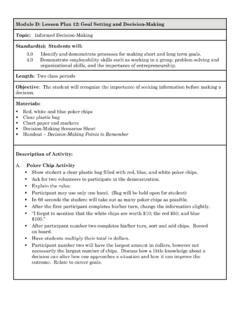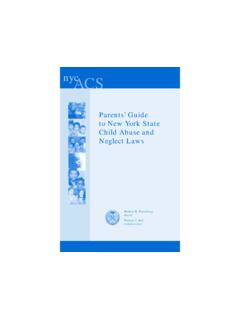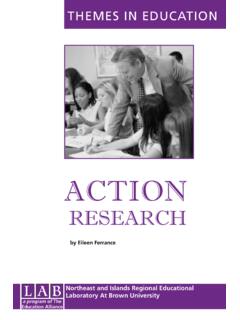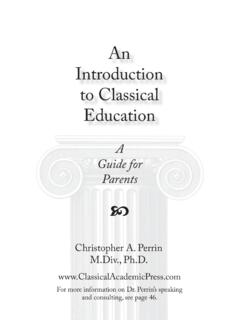Transcription of A Parent’s Guide to talking to children about safety - AIFS
1 A Parent s Guide to talking to children about safetyAbout Child WiseEstablished in 1991, Child Wise is one of Australia s leading not-for-profit child sexual abuse prevention organisations. Our vision is of a society in which children can grow up free from abuse and exploitation. Child Wise works to build awareness, deliver education, and provide the tools to empower individuals and communities around Australia so they can actively prevent child of the Parent s GuideThis booklet has been specifically written for parents and caregivers to assist you in talking to children about personal safety . As the primary protectors of children , parents and carers play an integral role in keeping children safe from harm. In order to prevent children from becoming victims of abuse, it s important that they are armed with the knowledge and skills to identify unsafe situations and to speak up if they ever have : 978-0-9577811-3-9 Child Wise Ltd, by Jasmine Wise values feedback and comments in order to improve our programs.
2 Please contact us if you would like to make any suggestions regarding this 2 Why speak with children about safety ? 3 How to talk to children about safety 4 The safety Continuum 4 Open communication 5 Early warning signs 6 One step removed 7 Listen and act 8 Developing children s safey network 9 Find out more 10 Child Protection contact details 12 ContentsPage 02 children have the right to be and feel safe at all times. talking to children from an early age about safety , their bodies, and how they can protect themselves, is an important part of keeping them safe. Personal safety , also known as protective behaviours, is a powerful way to teach children about safety , risk taking, and what they can do when they feel unsafe.
3 children who are confident, assertive and have good support networks are less likely to be at risk of abuse or find themselves in dangerous situations. By building awareness of 'safe' behaviours, and teaching children empowerment strategies, protective behaviours aims to promote child resilience; and ultimately reduce child abuse in our create child safe communities, parents and carers need to learn about the issue of child safety and child abuse. The more knowledge parents have about child safety and child abuse, the greater likelihood they can create safe environments for children and prevent the occurrence of abuse or unsafe situations. Knowledgeable parents and carers can identify unsafe situations and potentially prevent interactions between their children and perpetrators of abuse.
4 Learning the facts about abuse will also help stop parents and carers from overreacting to situations that may not pose a risk for children s safety . As parents and carers, you can be highly effective instructors in protective behaviours for children . Research shows that children who receive consistent safety messages, both at home and at school, are more likely to be confident in responding to unsafe situations and to speak up if something happens that concerns or upsets them. Child Wise acts as the Chair of the Protective Behaviours Victorian Reference Group, delivering a holistic approach to protective behaviours. You can find out more about our work and Protective Behaviours education programs on the Child Wise website: and carers can be highly effective instructors in protective behaviours for 03 Most children are abused by someone they know and trust making it harder for them to speak up.
5 Creating a child friendly space (in the home and in organisations) helps children to speak up and personal safety is a key component of this. Most children don t speak about abuse that has happened to them. There were 272,980 notifications to child protection across Australia in the 2012/13 financial is always the responsibility of adults to protect children and ensure they are kept safe from harm - child abuse is never the child s Educating children in protective behaviours is about recognising that sometimes children be exposed to danger or may take risks that parents and carers are unaware of. Providing children with tools to respond to unsafe situations and to talk to adults about their concerns, will create more resilient children and safer environments for them to grow up in.
6 Speaking to children about their safety is a powerful way to build open communication with them. Making children feel confident to speak up and to ask questions when they feel uncomfortable is an integral part of keeping them safe. Only a small percentage of children who are sexually abused will disclose it. This happens for many reasons: they may have been threatened; they may fear they will not be believed; they may feel too ashamed - believing that they deserved the abuse; or they may feel a pressure for secrecy. It s important to remember that disclosure for children is not the same as for adults we cannot expect children to remember dates, times, locations, names, and then to explain them all in one conversation, as may happen when adults report a crime.
7 Disclosure by a child may not always be verbal - it can be expressed in many different ways. A child may reveal their abuse or lack of comfort through their behaviour, emotions, or body language. Many cases go undetected because parents and professionals are not aware of the signs and symptoms of child abuse; making it hard to identify when it has occurred and to respond appropriately to children . Why speak with children about safety ?Page 04It can be difficult to find ways to speak with children about safety . One of the first steps is to ensure that you are prepared and knowledgeable about the issue. We recommend you take part in an education program on protective behaviours or general child abuse prevention, as this will help give you the skills to help protect your children .
8 There are also resources about child abuse and wellbeing on the Child Wise website which will be useful to learn more about these your child has participated in a program or lesson on personal safety or protective behaviours, this can be a good starting point for continuing the discussion at home. Asking them what they learned about safety is a good way for you to find out what they know. It also shows children that you are comfortable talking with them about personal safety , further reinforcing the message of speaking up about any concerns they may situations when children feel safe, happy and content are great conversation starters. These can be used to initiate conversations about when the child does not feel that way, and to reinforce that there are the times that they should share their thoughts, feelings or concerns with you.
9 The safety ContinuumUsing the safety Continuum is a good way to engage children . children like to explore and take risks in their everyday lives. The safety Continuum is a way to explain when this might become unsafe, putting experiences and situations on a scale:How to talk to children about safetyUsing examples, talk with children about each of these situations, and how they might respond to each one. For instance, fun to feel scared might involve trying a flying fox for the first time - because we know the flying fox is safe. Risking on purpose might be when they jump from a swing at the playground - you know it is a risk but it is unlikely you will get badly hurt. An unsafe situation might be if a stranger or someone they don t know well offers them a lift home in their to feel scaredRisking on purposePage 05 Open communicationGiving children the language and words to talk about their body and how they feel will help them to communicate with you and with other adults caring for them.
10 Whether it be about a fantastic day they had exploring the beach with friends, or about a situation or experience in which they felt uncomfortable, children who have the words to express how they feel and that are encouraged to speak about it, will be more likely to talk with you when it matters. It s important to teach children the correct words for their body parts. Removing the taboo of talking about genitals is helpful in making children comfortable to raise concerns they might have. Identifying appropriate and inappropriate touching is a good way to help children know when they might feel unsafe. An effective way to demonstrate this is to use the swimming bathers analogy: where their bathers go (and their mouths as well) are their own private body parts and no one should touch them there.





